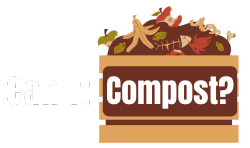Can I Compost Paper with Ink?
Most inks used in newspapers and office paper are non-toxic and will break down in a compost pile, but certain inks may contain heavy metals or other substances that are not compostable.


Sourced & Cited
Composting paper with ink can be a great way to reduce waste and enrich your compost, but it's important to be aware of the potential risks associated with certain types of ink. Let's explore the best practices for successfully composting this material.
Compost Classification
Brown (Carbon-rich): Paper, even with ink, is primarily a carbon-rich material, lacking the high moisture content of fresh fruits and vegetables. Its dry nature contributes to the carbon-to-nitrogen balance crucial for effective composting. Ink itself adds minimal nitrogen.
🏷️ Tags
Important characteristics to know about this item:
Breaks Down Slowly Use in Moderation Pest Attraction Risk Odor Risk
⚠️ Potential Risks
- Potential for heavy metal contamination from certain inks, affecting the quality of your compost and potentially the soil where it is used.
- Slow decomposition rate compared to other organic matter, particularly with higher ink concentrations.
- Attracting pests to the compost pile if not properly managed.
- Unpleasant odors if the compost pile is not well-aerated or if excessive amounts of inked paper are added at once.
💡 Best Practices
- Shred or tear paper into smaller pieces (approximately 1-inch squares) for faster decomposition.
- Ensure your compost pile has a proper carbon-to-nitrogen ratio by mixing inked paper with ample amounts of "green" materials like grass clippings or food scraps.
- Bury deeply within the compost pile to reduce the risk of pests and help regulate temperature.
- Monitor the compost pile regularly for any signs of odor or pest infestation.
